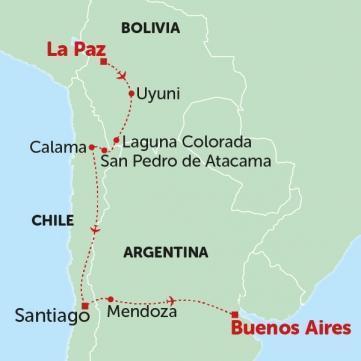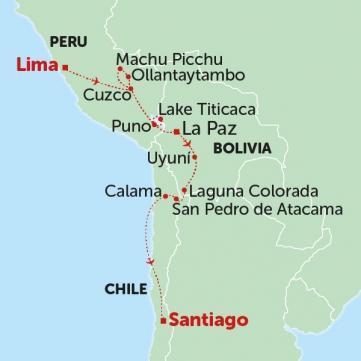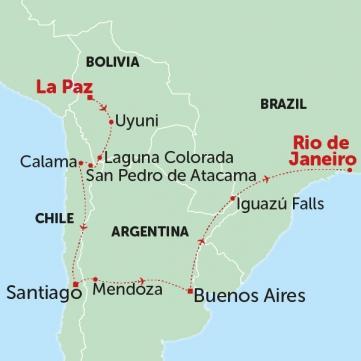Book NOW for $1 £1 €1 • Flexible Payments • No Change Fees • Private Departures Available
- Home >>
- Destinations >>
- South America >>
- Bolivia
Bolivia Tours
Located in the very heart of South America, join a Bolivia adventure tour to discover its extremely varied, rugged landscapes and diverse climates. Named after Simón Bolívar, The Liberator, our Bolivia adventure tours allow you to see some of the world’s tallest mountains, highest cities and broadest (and most surreal) salt flats.
One of Bolivia’s best surprises is the country’s fascinating ethnic diversity - about 60% of the population claims aboriginal heritage, including Aymará, Quechua and Guaraní peoples among 30 known indigenous groups. Bordered by Peru, Brazil, Paraguay, Argentina and Chile, Bolivia is landlocked between much richer neighbours but its natural resources and natural beauty shine above many of them. Our Bolivia adventure tours cross the high Altiplano, a vast windswept plain, featuring substance farming, with regular sights including herds of llamas and alpacas being tended by local boys in traditional dress. La Paz, the ‘city that touches the clouds’ is the world’s highest capital at around 4,000 metres altitude and is the centre of Bolivian government. Famous sights like Lake Titicaca - the world’s highest navigable lake, Potosi - the centre of silver mining from ancient times and Uyuni - with the famous Salar de Uyuni or salt lake can all be seen on a Bolivia adventure tour.
Featured Tours
Bolivia Travel Articles, Inspiration & Information
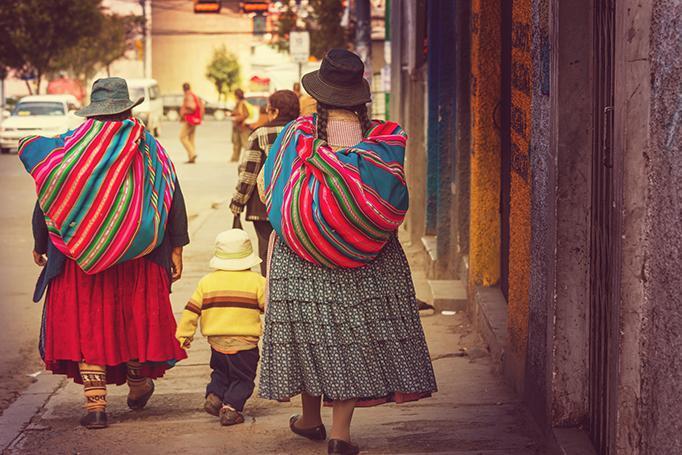
Bolivia: the ultimate cultural adventure
Nestled in the dramatic Andes mountains is Bolivia, one of South America’s poorest but also most fascinating countries to travel. From the magnificent Salar de Uyuni salt flats, to La Paz, one of the highest cities in the world, Bolivia is a real assault on the senses. Read more
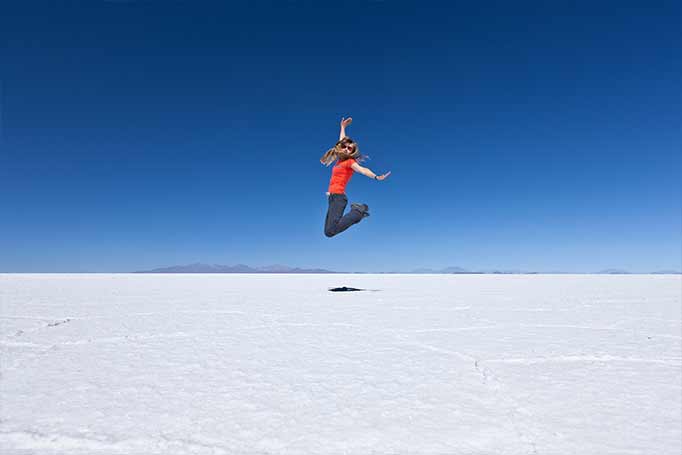
An expedition like no other
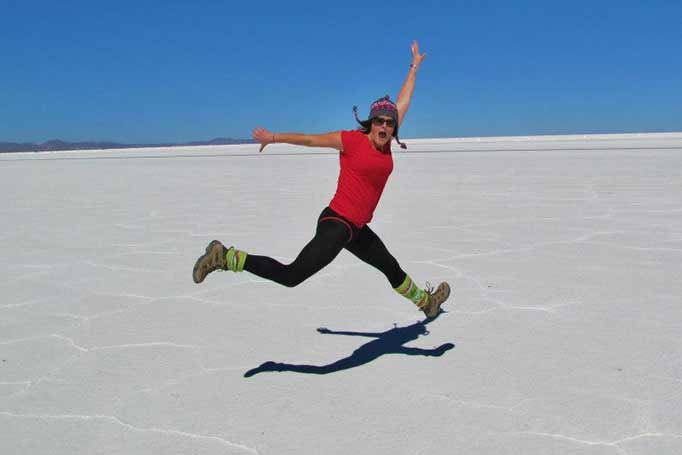
Con-salt your senses!
Bolivia is a fascinating place offering so much diversity. From the street parades, ‘witches’ markets and Death Road mountain biking in La Paz to the UNESCO World Heritage ‘White City’ of Sucre and the horse riding tours through the Andes. Emma's blog post is about some of her most memorable experiences visiting Bolivia. Read more
Independently Verified Travel Reviews From Past Clients
Bolivia Travel Guide
Bolivia Travel Guide
In Bolivia, adventure is around every corner. From the creepily named 'Death Valley' to the glaring harsh expanse of the world's largest salt flats, there is something about Bolivia you just can't quite get anywhere else. Less visited than its more popular neighbours, it remains an inexpensive South American destination and despite colonialism taking its toll it has the largest indigenous population in South America with over 60% of the population of indigenous descent. It is also boasts a diverse natural landscape encompassing everything from soaring snowy peaks, high plateaus, dense jungle to vivid volcanic views. This colourful combination of vibrant culture and varied scenery make it an interesting, intriguing destination.
Money
The currency in Bolivia is the boliviano (symbol: B$) which is divided into 100 centavos. Notes come in 10, 20, 50 and 100 boliviano denominations and coins come in 1, 2, 5 boliviano and 10, 20 and 50 centavo denominations. The currency is sometimes referred to as the peso as that is what it was officially called before 1987 when they changed the name. It can be difficult changing larger notes outside of cities, so try and ensure you have plenty of small denomination notes (less that B$10).
US dollars are the easiest currency to exchange and it is recommended to carry some US dollar cash with you in crisp, clean bills. Be aware that US$100 bills in the CB-B2 series and US$50 bills of the AB-B2 series will not be accepted. ATMs are available in reasonable sized towns and cities and accept major international cards such as Mastercard and Visa. They are not always reliable, so it is best to carry your travel funds in a mixture of cards and cash.
Bolivia is an inexpensive destination to travel in. A set lunch at a basic restaurant is generally between US$2-6 and the best value meals are at the local markets which can be less than US$2. Tipping is at your own discretion. It is not expected in smaller simple restaurants, but may be in higher end locations.
Major Cities and Towns in Bolivia
Despite its size Bolivia has a mere 10 million people, who are concentrated around a handful of cities. La Paz is the best known of these, as the administrative capital and seat of the government. It is located in the far west of the country, not far from the border with Peru and is known for its markets, museums, nightlife and also transport hub to visit many of the surrounding attractions. In the north, Rurrenabaque is a small rainforest town that provides the access to national parks and jungle lodges in the Bolivian Amazon. Further west, Santa Cruz is Bolivia's second largest city from where it is possible to explore nearby Jesuit towns, churches and ruins. Towards the south-central of the country, Cochabamba and Sucre are both smaller cities. Cochabamba is buzzing location with lively nightlife and food scene. Sucre is Bolivia's constitutional capital and seat of the judiciary. Literally translating to 'sugar' in French, Sucre has famed white-washed colonial architecture and is a very elegant city. South of Sucre, Potosi was once one of the wealthiest cities due to nearby silver mines. Then Uyuni, a small desert town acting as a gateway to the nearby Uyuni salt flats and Tupiza near the border with Argentina which is well known for its red rock formations and 'Wild West' countryside.
Electricity
Electricity in Bolivia runs on 220 volts/50 Hz. The most common electrical sockets accept two prong round-pin plugs such as that used in Europe or North America flat-pin, two prong plugs. If in doubt, carry a universal adaptor to cover all your bases.
Etiquette and Culture
Bolivia's population is made up of 30% Quechua, 30% mestizo (mixed white and indigenous), 25% Aymara and 15% European origin meaning it has the largest indigenous population in South America. Although the country is 95% Roman Catholic, indigenous belief systems such as animism and the worship of deities from the natural world have been incorporated into many religious activities. The majority of Quechua and Aymara live in the highlands in the south and west of the country. Outside of cities in this area, there are settlements that speak little or no Spanish having Quechua or Aymara as their first language.
Learning basic greetings in Spanish is an excellent way to foster good will amongst locals. A simple buenos dias (good morning), buenos tardes (good afternoon) or buenos noches (good evening) will go a long way. Bolivians value politeness and manners, so ensuring you greet people properly is important, along with using please, por favor, and thank you, gracias. Members of the opposite sex are greeted with one kiss on the cheek in the north and a kiss on both cheeks in the south.
Be sure to ask before taking photographs of people, as some find this offensive or will expect to be paid.
Geography
Bolivia's most striking geographic feature is the Andes mountain range which runs in two chains through the west of the country, separated by the Altiplano, also called the Andean plateau or Bolivian plateau, a broad expanse of windswept mountain plateau which is the largest area of high plateau in the world outside of Tibet. The snowy peaks of the Andes give way to Sub-Andean Bolivia with its highland valleys and finally the tropical lowlands in the east and north of the country. This part of the country varies from vast, flat scrub land to dense Amazonian jungle. In addition to these three geographic regions, Bolivia has some astonishing natural landmarks including the largest salt flats in the world, the highest navigable lake (shared with Peru), towering volcanic peaks and vibrantly coloured lakes. It is roughly the same size as Spain and France combined, although with fewer than 10 million people it is significantly less populated.
History
The Tiwanaka civilisation inhabited the region from 1500 BC to 1200 AD and was thriving by 700 BC with an extensive system of roads, irrigation canals and terraced farming in the Andean highlands. They left remains of urban centres, palaces, pyramids and temples. By 500 AD their influence extended into almost all of Bolivia, southern Peru, northern Chile and north-west Argentina until a period of decline set in from 1000 AD leading to complete collapse by 1200 AD. There are speculations as to the cause of the decline, but ultimately it remains a mystery.
Regional city-states such as the Aymara kingdom rose to prominence in the aftermath of the Tiwanakans, but it was the Inca Empire that would be the next great influence on the region. Originally based in the Cuzco valley in Peru, the Incas (from which the Quechua people are descended) started to expand their territory and between 1476 and 1534 extended their empire to include Lake Titicaca and the Aymara kingdoms before pushing into the rest of Bolivia, as well as the north of Chile and Argentina.
Internal power disputes within the Inca Empire led to civil war which weakened it giving the invading Spanish the opportunity to seize power. In 1532, conquistadors led by Francisco Pizarro captured the Inca ruler Atahualpa, holding him to ransom before killing him, so gaining control of the fractured empire. Bolivia became an unimportant backwater of the Spanish empire, called Alto Peru, until silver was discovered in Potosí. Potosí was founded in 1545 and the mine there was the most productive in the world funding the Spanish Crown for many years. In 1558 Alto Peru gained autonomy from Lima and the newly found wealth led to farming communities and building in cities such as La Paz and Sucre.
As it was for much of the continent, dissatisfaction with far-off Spanish rule began to simmer in the early 19th century, aided by harvest failures and epidemics. Bolivia was the scene of Latin America's first independence movement, which had gained traction by May 1809, although ironically it would be the last to gain independence. The country's first revolution was quickly put down, while in other parts of the continent General Simon Bolívar and José de Sucre were liberating Venezuela, Colombia and Bolivia and in the south José de San Martín were liberating Argentina and Chile before fighting battles in eastern Bolivia. This led to Sucre inciting a declaration of independence, creating the republic of Bolivia in 1825. Simon Bolívar was the nation's first president and the man for whom the country is named.
In 1879-84 the War of the Pacific was fought between Chile, Peru and Bolivia at which point Bolivia lost its access to the Pacific Ocean becoming a landlocked nation. In 1903 Brazil annexed the Acre region, Bolivian territory which previously stretched into the Amazon Basin. In 1932 Bolivia entered the Chaco War with Paraguay over oil deposits until a ceasefire was declared in 1935 and a 1938 truce awards three-quarters of the Chaco region to Paraguay. Domestically, by the 20th century the country was controlled by tin barons and landowners with local people working the land and mines as little more than peasants. This led to the National Revolution of 1952 after the elected MNR revolutionary political party was prevented from coming into power by a military coup. The revolution overthrew the military and the mines were nationalised.
The 60s and 70s were a time of brutal dictatorships and military coups marked by torture, disappearances and arrests. The 80s saw Hernan Siles Zuazo come into power, which began one of the country's longest periods of democracy. However, government overspending and monetary devaluation left the country's economy in tatters which gave way to harsh economic reforms leading to high unemployment.
The 90s saw the country open up to foreign investment and was marked by a US-backed crack down on coca production and the cocaine industry. In December 2005, Bolivia's first indigenous leader, Evo Morales, was voted in as president. A left wing leader, Morales has rewritten the country's constitution, given greater power to the nation's indigenous communities and redistributed land from large ranges to poor local people. He is staunchly resisted by right-wing opposition, particularly in the east of the country where much of the nation's natural resources are found.
Top Attractions and Highlights in Bolivia
1. Salar de Uyuni (Uyuni Salt Flats)
A dazzling white, vast expanse covering what was at one time the floor of a expansive inland saltwater lake. It is the world's biggest salt lake and is surrounded by striking high mountain peaks.
2. La Paz
At over 3,500 metres La Paz is the highest capital city in the world nestled in a deep mountain canyon. It is a kaleidoscope of cultures with indigenous Aymara character alongside modern urbanity. Explore the witches market for a glimpse into the Aymara's mysticism and herbal remedies.
3. Potosí
The highest city in the world and one most famous for its nearby silver mines, its elegant colonial architecture is a glimpse into its past when it was once one of the wealthiest cities in the world.
4. Sucre
Nicknamed the 'white city', Sucre is considered Bolivia's most attractive settlement with its serene white-washed colonial buildings and vibrant university life.
5. Lake Titicaca & the Isla del Sol
Mythology tells that the Isla del Sol was were the sun and moon were created and the island retains its spiritual importance for the local people.
6. Madidi National Park
This park covers almost 19,000 square kilometres and is one of the world's most extensive biodiversity reserves. It is home to a diverse array of animal, bird and plant life.
7. Tiwanaka Archaeological Site
At one time this was the centre of a massive, pre-Inca empire and the remaining ruins are now UNESCO World Heritage Listed.
8. Death Road – the World's Most Dangerous Road
This terrifying route from La Paz to Coroico has earned the title of the world's most dangerous road. Plunging from the heights of the Cordillera Real in the Andes to the Yungas jungle, it is popular with mountain bikers looking for an adrenalin kick.
9. Laguna Colorada and the Eduardo Avaroa Andean Fauna National Reserve
This national reserve provides a home for rare Andean wildlife. Sitting like a ruby on the landscape, the crimson and orange-hued Laguna Colorada has been dyed by algae and plankton which thrive in the mineral-laden waters.
10. Jesuit Mission Trail in Chiquitos
Distinctive Jesuit churches that combine European and indigenous styles offer a glimpse into the past when Jesuit missions were sent to convert local populations. What remains are a collection of elegant buildings that have been given UNESCO World Heritage status.
10 Interesting Facts about Bolivia
1. Bolivia has three official national languages: Spanish, Quechua and Aymara. There are over thirty additional indigenous languages spoken in the country.
2. La Paz is the highest capital city in the world at 3,632 metres (11,910 feet) above sea level.
3. Bolivia is either the world's second or third largest producer of cocaine. It is believed that up to 290 tonnes of cocaine are produced here every year.
4. Like many of its neighbours, Bolivia's national sport is football (soccer) with professional matches held every weekend in major cities and impromptu games cropping up on streets and local sports fields.
5. Bolivia has 1415 catalogued species of bird and 5000 plant species which are some of the highest numbers in the world. In addition it has many endemic species (species present in Bolivia) including 25 mammal, 28 reptile, 72 amphibian and 21 bird species.
6. Over half of Bolivia's land area is located in the Amazon Basin. In addition, 18% of its land is protected within 22 national parks.
7. The national flower of Bolivia is called the kantuta. Its colours are reflected in the colours used in the national flag.
8. The Isla del Sol located on Lake Titicaca in the north-west of the country was believed by the Inca and Tiwanaku to have been the birthplace of the sun. The large island is home to pre-Columbian ruins and traditional communities.
9. Before various wars and land disputes, Bolivia's boundaries stretched to the Pacific Ocean where it had 850km of coastline, south and west into Paraguay and north to halfway up Peru's eastern border. The reason for much of this territory loss was disputes over valuable natural resources such as copper and nitrate in the Atacama Desert now belonging to Chile, oil fields in the Chaco region, much of which is now in Paraguay, and rubber in the north, now belonging to Brazil.
10. Legendary revolutionist Che Guevara met his end in Bolivia in the tiny village of La Higuera. He had travelled to Bolivia to aid guerilla forces in the area until he was hunted down, captured and executed by US special forces and Bolivian army. His body was buried in a secret grave until his remains were found in 1997 and transported to Cuba and his final resting place.
Guide to food in Bolivia
While Bolivia is not a country famous for its cuisine, there are plenty of local dishes that are worth sampling. The cuisine of the country can be broadly divided into three regions – the Altiplano, the valleys and the tropical lowlands. Each region grows different produce and so locally grown ingredients have led to regional specialities. Some Bolivian dishes can be quite spicy, so if you prefer your meal less fiery you can ask for it 'sin picante'.
The most common crops in the Altiplano are grains and potatoes and there are many dishes based around these elements. Quinoa grows well in this area and its high protein grains are a diet staple. There are hundreds of varieties of potatoes, some perhaps unique to the area. Freeze-dried potatoes (chuño) are also commonly used in cooking. Some of the most popular dishes of the highlands include spicy chicken with onion and potatoes (sajta de pollo), spicy lamb/mutton (thimbu) and a soup (chairo) made of meat, vegetables and chuño. Fish is an important ingredient around Lake Titicaca, the mos popular being the introduced trout (trucha) or kingfish (pejerrey). Salteñas are a popular snack of pastry parcels filled with stewed meat and vegetables. They can be found all over but are most typical in La Paz.
The valleys are the heart of Bolivia's agriculture and dairy industry and also where its wine and brandy are grown. Two of the local dishes belonging to the city of Cochabamba are silpancho, thinly sliced breaded meat served with eggs, rice and bananas and pique de lo macho, roasted meat with chips, onion, sausage and pepper. In the south close to Argentina, red meat becomes more popular including parrillada, mixed grill of different cuts of beef.
The tropical lowlands are good for growing yucca, tropical fruits, rice, bananas and beef and many dishes incorporate these ingredients. Locro is a soup made of rice, chicken or beef, bananas, eggs and potato. Masaco is fried jerky and banana. The snacks in this area can be particularly tasty and distinct. Humintas are cornmeal dough filled with cheese, onion, egg and spices and they can be boiled or baked. Cañapés are pastries made from yucca flour and cheese, biscochos are corn biscuits and empanadas are like miniature Cornish pastries with various fillings.
Best time to travel in Bolivia
Seasons
Bolivia is a year round destination. Located in the southern hemisphere, it has a distinct summer from December to February (low season) which is warm and wet, and winter from June to August (high season) which is cool and dry. Spring and autumn are considered shoulder seasons, the weather is generally mild and travel can be good value at these times of year. In addition to seasonal variations the large difference in altitude within the country plays a key role in regional weather. The Altiplano, being at a very high altitude, is cool and relatively dry year round. The nights can be bitterly cold, even in summer, so layers are essential. Meanwhile the tropical lowlands are hot year round except on occasions during winter when cold winds blow in from Argentina. The valleys in between enjoy an intermediate climate somewhere between the two.
When to travel
If you are intending on hiking, climbing or mountain biking ideally you should look at travelling outside the summer months (December-February) which have the highest rainfall making some activities dangerous. The flip side to this, of course, is that the winter/dry season (June-August) is also the most popular time of year and the time where you will get bigger tourist crowds. For a compromise, travel between seasons in spring or autumn, during the shoulder period.
In addition to weather there are several big events in the calendar which may be worth planning around. Carnaval, held in the week preceding Lent (usually late-February or early March) is a time of nationwide celebrations and fiestas. The most famous and colourful of the processions is in Oruro although those in Sucre, Tarija and Santa Cruz are also noteworthy. Similarly, in the first week of February, the Fiesta de la Virgen de Candelaria is another week-long festival with celebrations occurring in specific locations around the country.
In late-May or early-June, Gran Poder is a festival in La Paz which involves candlelit processions, costumes and dancing. In the second half of July, the Fiesta del Santo Patrono de Moxos is held in Beni involving crazy costumes, partying and drinking.



